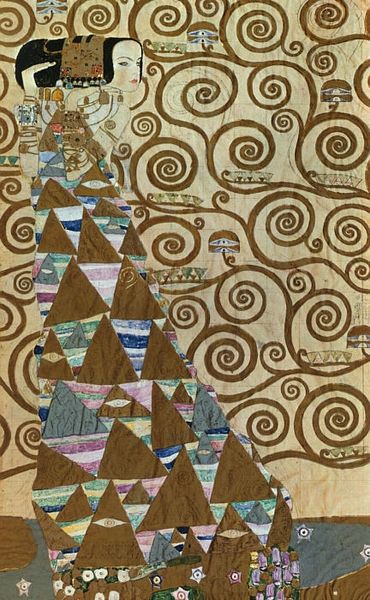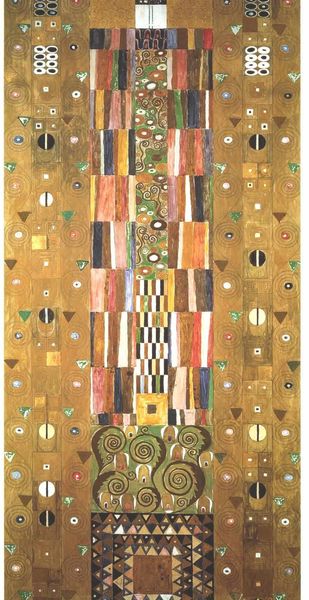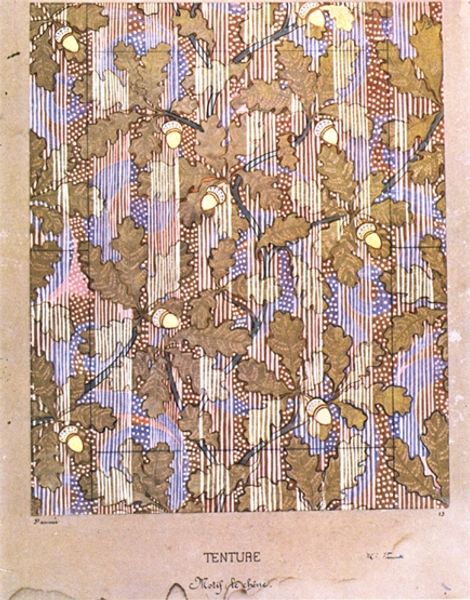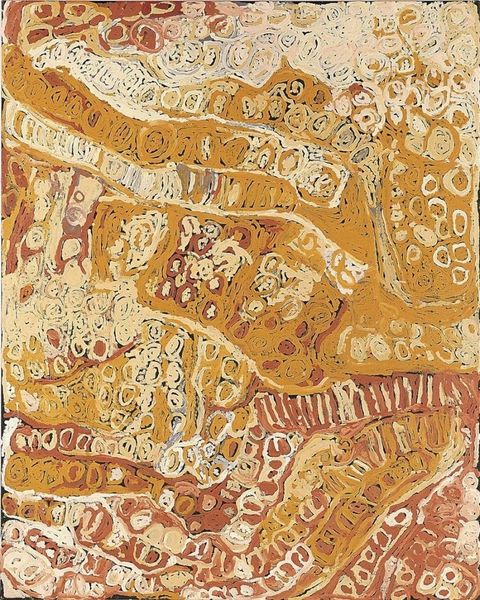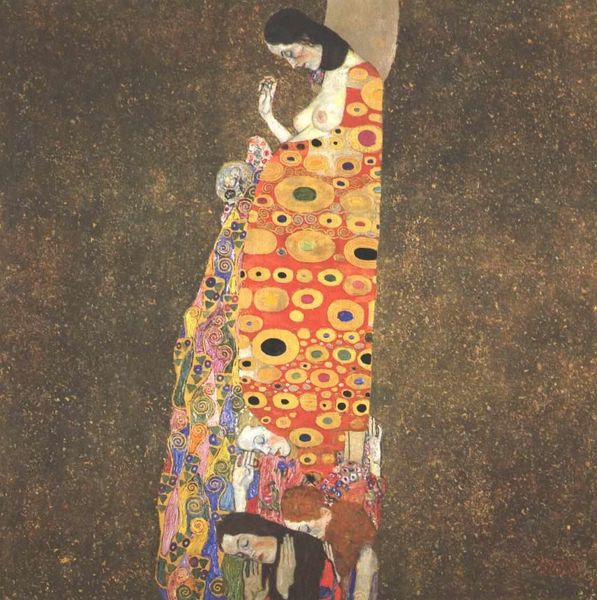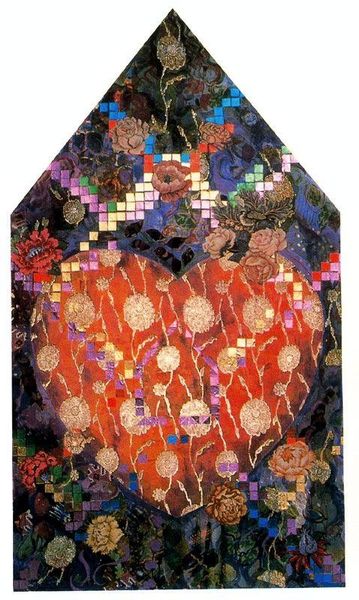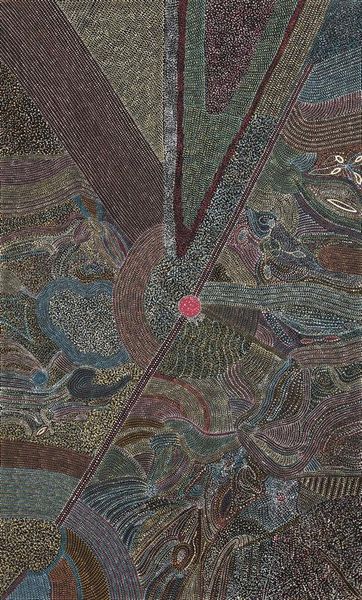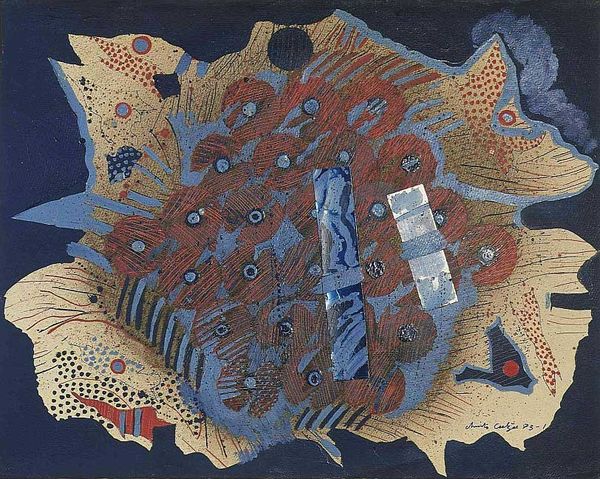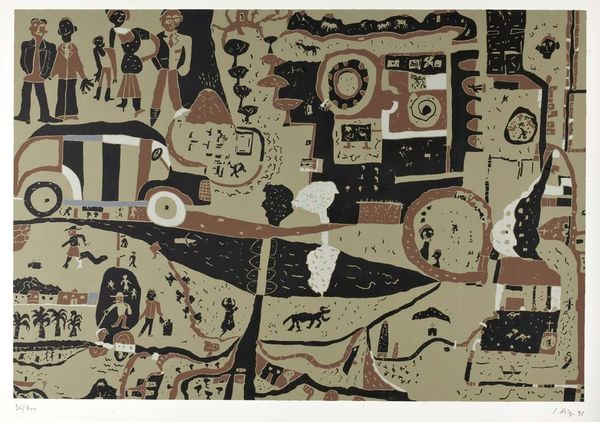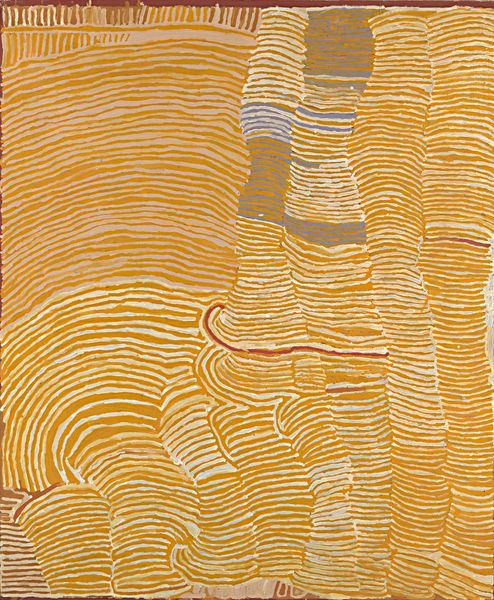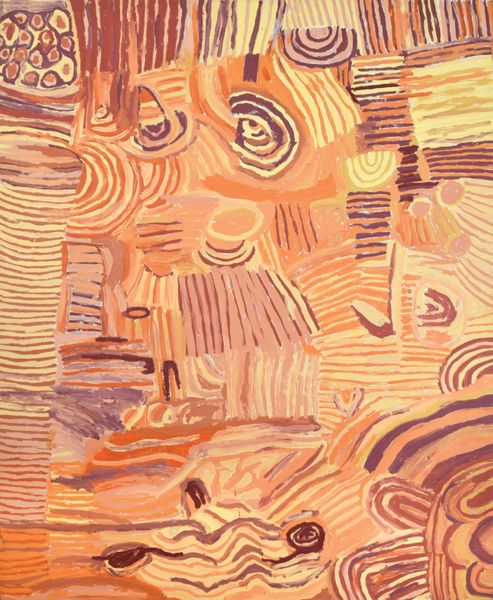
Cartoon for the Frieze of the Villa Stoclet in Brussels: Fulfillment 1909
0:00
0:00
mixed-media, painting, textile
#
mixed-media
#
art-nouveau
#
painting
#
pattern
#
textile
#
folk art
#
text
#
geometric
#
symbolism
Dimensions: 194.6 x 120.3 cm
Copyright: Public domain
Curator: Gustav Klimt's "Cartoon for the Frieze of the Villa Stoclet in Brussels: Fulfillment" created around 1909, offers a fascinating example of his distinctive style within the Art Nouveau movement. Editor: It feels…claustrophobic. The density of pattern and the flattened perspective create this sense of being overwhelmed, almost consumed, by the design itself. Curator: This mixed-media work, originally intended as a design for a larger architectural project, embodies the Secessionist ideals pervasive in Vienna at the time. Klimt sought to unify all art forms, blurring the boundaries between painting, decoration, and architecture. He even uses textile elements here. Editor: I am intrigued by this apparent rejection of realism and embracing of decorative abstraction; however, can this act truly be seen as ‘unifying’? If it denies all the narratives for the sake of visual dominance alone. Who is the fulfillment for? Curator: Ah, there we perhaps reach an impasse. One interpretation places 'fulfillment' as an aesthetic ideal rather than narrative. These were designs commissioned by a wealthy patron, after all. The elite consumer becomes complicit as an agent to express visual taste and wealth through owning Klimt's patterns of art. Editor: In this light, looking through the context, these motifs of geometric forms, spirals, and repeated stylized imagery reflect a societal embrace of the aesthetic—with little substance. And the heavy gold hints at class dynamics, reflecting consumerism. It highlights a dangerous obsession of Vienna that I wonder how ordinary people who could not access that wealth felt when looking at this in context. Curator: The piece now resides at the Museum of Applied Arts in Vienna. Editor: After reconsidering my interpretation and looking deeper into the materials and art background, my views have changed. The patterns, dense as they are, reveal much regarding societal obsession of image within Vienna at the time. It almost seems like Klimt wanted to warn viewers that aesthetics are, sometimes, deceptive. Curator: Indeed. Klimt's work is never simple. It's rewarding to keep multiple possibilities open.
Comments
No comments
Be the first to comment and join the conversation on the ultimate creative platform.
